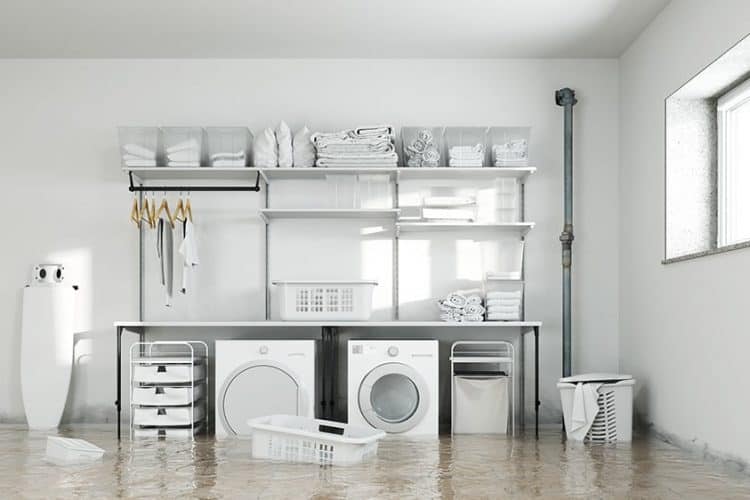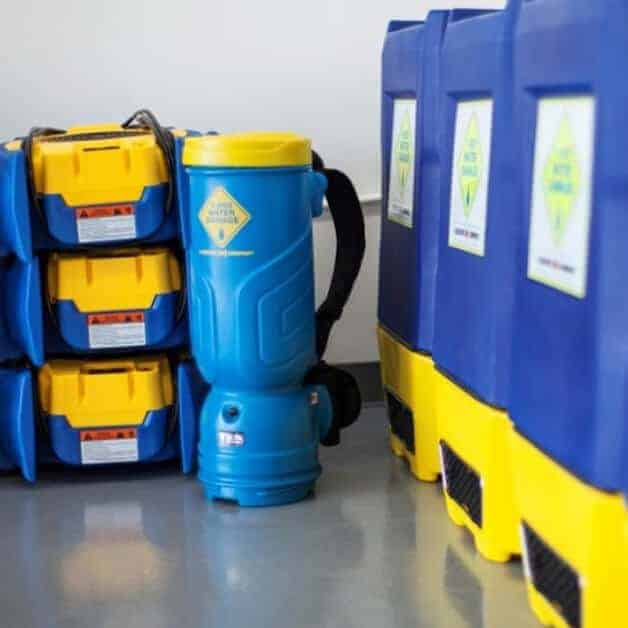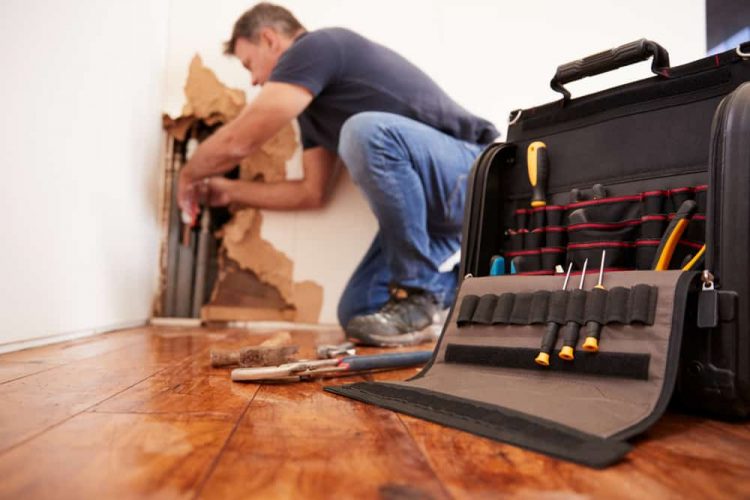
At 1-800 WATER DAMAGE, we understand the distress and hardships property owners experience in the wake of a fire. With years of experience in fire and smoke damage restoration, we have witnessed firsthand how fires can harm structures, contents, and the overall well-being of those affected.
Fires strike unexpectedly. When a fire occurs, its impact goes far beyond the immediate flames. The aftermath of a fire incident often involves dealing with various types of damage.
This article aims to shed light on the different types of fire and smoke damage and provide insights into the restoration process. It will also explore the variety of services available to help mitigate damage and alleviate the stress of the cleanup.

-
Common Types of Fire Damage
When a fire affects a property, it can cause a wide range of damages, each presenting unique challenges during restoration. Understanding the different types of fire damage is essential for property owners and restoration professionals alike. Let’s explore the most common types of fire damage.
Structural Damage
One of the most apparent impacts of a fire is structural damage. As flames engulf the building, the intense heat weakens materials, compromising the integrity of walls, roofs, and foundations. Structural damage can vary in severity, ranging from minor warping and cracks to complete collapse in severe cases.
Contents Damage
In addition to structural damage, fires can wreak havoc on the contents inside the property. Furniture, electronics, personal belongings, and valuable items can suffer varying degrees of damage depending on the intensity and duration of the fire.
Electrical Damage
Electrical fires are a common cause of fire incidents and can lead to severe damage. These fires often result from faulty wiring, overloaded circuits, or malfunctioning electrical appliances. Professionals will typically ensure that power sources are shut off and thoroughly inspected before restoration work begins.
Common Types of Smoke Damage
Smoke is an insidious element of fire incidents that can cause widespread damage even after the flames have been extinguished. Smoke particles can travel far beyond the fire’s point of origin, infiltrating every nook and cranny of a property. That is why having a preliminary deodorization and detoxification program is important. With 1-800 WATER DAMAGE, this is always part of the emergency mitigation services we provide during a fire restoration job.
Wet Smoke
Wet smoke results from fires that burn at a lower temperature, creating a smoldering, slow-burning fire with thick, sticky smoke residues. This type of smoke damage is particularly common in fires involving synthetic materials and plastics. This sticky residue created by wet smoke can be challenging to clean. These smoke particles are small and tightly packed, making them harder to dislodge from surfaces.
Dry Smoke
Dry smoke results from fast-burning, high-temperature fires that consume natural materials like wood and paper. Dry smoke leaves behind a powdery residue that is easier to clean compared to wet smoke. However, the high heat of the fire can cause more significant damage to surfaces and materials.
Protein Smoke
Fires involving food or kitchen-related incidents often produce protein smoke. While it may not appear as visibly thick as wet or dry smoke, protein smoke is highly pungent and leaves behind challenging odors.

Steps in the Fire and Smoke Damage Restoration Process
Property restoration after fire and smoke damage is a complex and multi-faceted process that requires meticulous planning, specialized equipment, and skilled professionals. Each fire incident is unique, and the extent of damage can vary widely, necessitating a tailored restoration approach.
-
Safety Measures and Site Inspection
- Safety First: Ensuring the safety of the property and all individuals involved is the top priority. Before any restoration work begins, restoration experts assess potential hazards, such as structural instability, electrical issues, and compromised air quality.
- Damage Assessment: The professionals will then thoroughly inspect the property to determine the extent of fire, smoke, and water damage. This assessment helps in formulating a comprehensive specialty cleaning restoration plan.
-
Water Extraction and Drying
- Excess Water Removal: If firefighting efforts result in water accumulation, it must be promptly extracted to prevent additional damage. Specialized procedures with commercial-grade industry-standard extraction equipment are used for efficient water removal cleanup.
- Drying and Dehumidification: Commercial-grade restoration air movers and dehumidifiers are used to dry out the affected areas thoroughly. Moisture can lead to mold growth and further structural deterioration if left unchecked.
-
Cleaning Soot and Smoke Residue
- Smoke Residue Identification: Depending on the type of smoke (wet, dry, or protein), appropriate cleaning methods are chosen. Dry smoke residues can be powdery and easily cleaned, while wet smoke residues may require more aggressive cleaning agents.
- Surface Cleaning: Restoration professionals use specialized cleaning solutions and techniques to remove smoke residues from walls, ceilings, floors, and personal belongings.
-
Deodorizing and Odor Removal
- Odor Neutralization: Lingering smoke odors can persist even after cleaning the visible residues. Deodorizing agents are applied to neutralize odors and ensure a fresh-smelling environment.
- Air Purification: HEPA air scrubbers and ozone generators may be used to further improve indoor air quality by capturing and eliminating airborne particles and odors.
-
Repairs and Rebuilding
- Structural Repair: Damaged structural components, such as walls, ceilings, and flooring, are repaired or replaced to restore the property’s stability and integrity.
- Content Restoration: Salvageable belongings are meticulously cleaned, deodorized, and restored to their pre-fire condition. Items that are beyond repair are documented for insurance purposes.
-
Final Inspection and Handover
- Thorough Inspection: Before concluding the restoration process, a comprehensive inspection is conducted to ensure that all fire and smoke damage has been addressed.
- Certification and Handover: Once the property is deemed safe and fully restored, the restoration company provides certification of completion. The property is then handed back to the owner.
Fire damage restoration is not a DIY task. It requires the expertise and resources of professionals who understand the complexities of fire and smoke damage.
As we have seen, fires can cause various types of damage, including structural damage that weakens the building’s foundation, content damage that affects personal belongings and valuables, and electrical damage that poses additional risks. Moreover, smoke damage, with its different types of residues and odors, can continue to harm the property if not dealt with promptly and effectively.
At 1-800 WATER DAMAGE, our team is committed to guiding property owners through the entire restoration journey, ensuring a swift and thorough recovery from the aftermath of a fire incident.
Our experienced team understands the emotional toll that such events can take on individuals and families, and we approach each restoration project with compassion, professionalism, and attention to detail.
Are you in need of our property restoration services? Contact 1-800 WATER DAMAGE today by filling out our online form or calling (800) 928-3732; we’d be happy to help. -
-
Request A Quote Or Service Today
What Our Customers Say
How May We Help You? Request Service
Latest News
The Latest News, Restoration Tips & More


